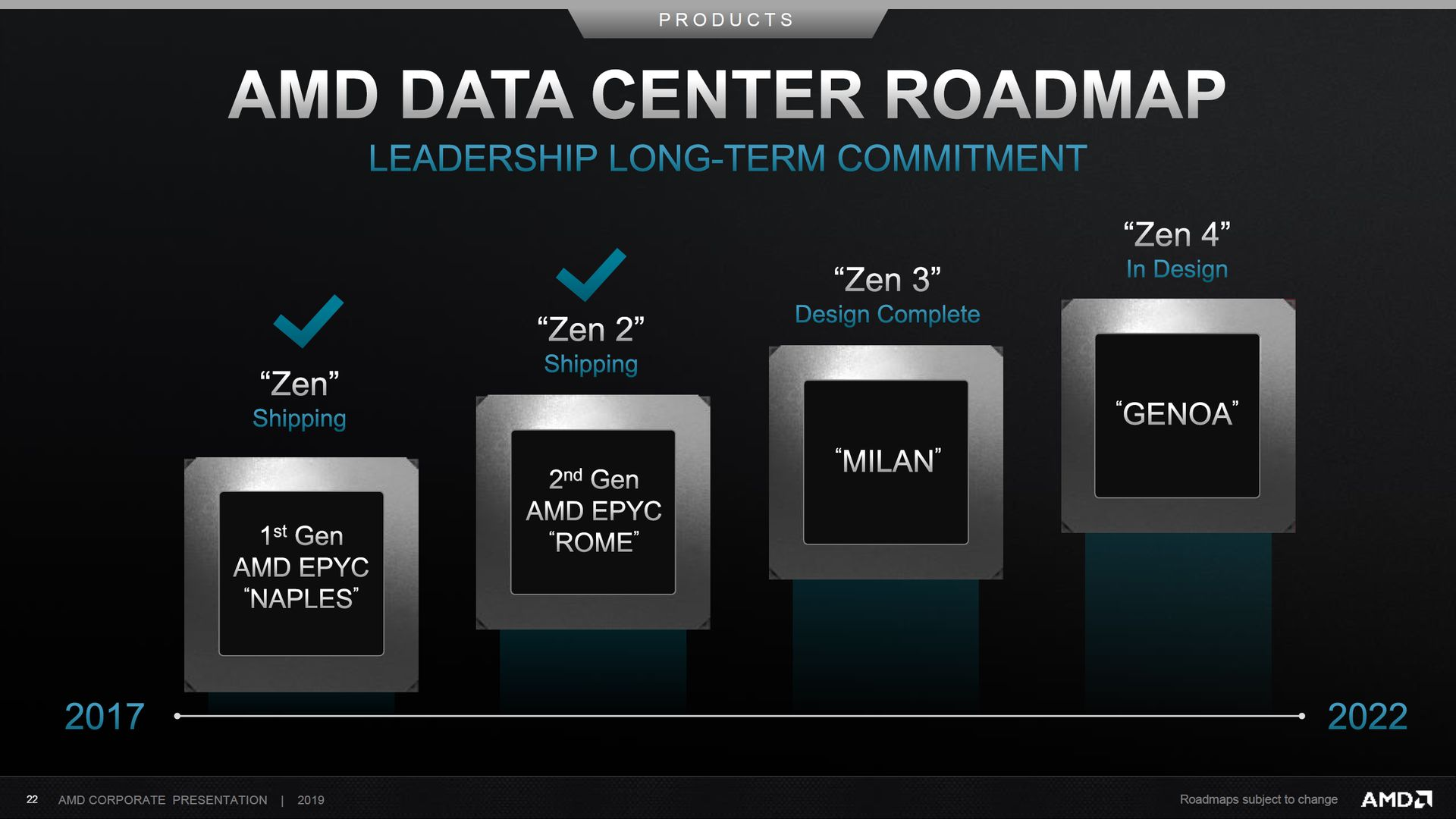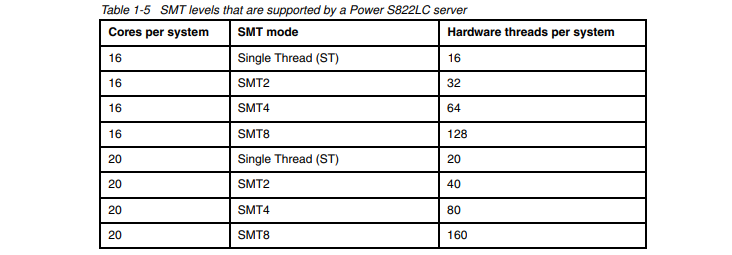
We are talking not only about processors with up to 96 cores, but also about new generation sockets AM5, TR5 (HEDT platform), as well as SP5 and SP6 (server platform). It also talks about support for PCI-Express 5.0 and DDR5 memory. While the information circulates on the network at the level of rumors, but given the way AMD's consumer segment is developing, their attempt to regain ground in the server market is a matter of time. So, EPYC MILAN on Zen 3, according to inside information, will be at least 20% more productive than the previous generation of AMD processors of the Zen 2 ROME architecture.
A Possible Path to AMD Leadership Is Increasing Threads Per Core... This is the moment that can reverse the trends in the server market. That is why there is a lot of talk about AMD introducing SMT4 technology into its Zen 4 generation server processors. We are talking about simultaneous processing of four threads, instead of the standard two threads per core. It should be noted that SMT4 technology is almost guaranteed to be absent in EPYC MILAN processors.
If we talk about sockets, then it becomes clear from rumors that AMD squeezed everything it could out of the AM4 platform: in this code, the company made a huge gift to consumers without updating the socket for Ryzen 5xxx and ensuring backward compatibility of new desktop processors with an existing socket. Here you can recall the endless changes to sockets at Intel, of which at least three have been released over the past four years: LGA 1151, LGA 1151 v2 and LGA 1200.
In 2022, A4 will be replaced by the A5 socket and, hopefully, it will live as long as the A4. Server socket updates are also coming: we will move from Socket SP4 and Socket SP4r2 to SP5 and SP6. Most likely, both models will be released at the same time and will be suitable for the same generation of EPYC GENOA with the same difference as SP4 and SP4r2 sockets: the former are designed for single-threaded processors, and the latter are for dual-threaded EPYC ROME processors. If we assume that AMD still implements SMT4, then SP4 will work, respectively, with single-threaded and dual-threaded processors, and SP4r2 - with four-threaded models.
But it's worth returning to the topic of SMT. You need to understand that in the user segment SMT4 is a dubious feature that will only increase latency and create losses out of the blue, while the processor decides on which of the threads to transfer the next task, of which dozens and hundreds of various applications create.
However, in the case of the processor segment, we are dealing with more monolithic systems, which, more often than not, are sharpened for working with some one heavy software complex. This is where SMT4 can do well, especially in computing. and this is not just theoretical calculations: SMT4 and even SMT8 are practically an ancient system that was used twenty years ago. The development of multithreading peaked in the early 2010s, when IBM still had its own production of servers for business.
Here are the specifications of the IBM Power S822LC - the last server from IBM in this line on its own 2014 IBM POWER8 Core processor :

The full documentation for the IBM server can be found here (PDF)
From the table you can see that the POWER8 Core had variable multithreading, from the " one core-one thread ”and up to eight threads per logical processor core. The official POWER8 Core frequencies per core range from 2.5 GHz to 5 GHz. At the same time, IBM servers on POWER8 also had 16 SMP sockets (symmetric multiprocessing) - which even then made it possible to combine a dozen servers into a computing cluster.

It is worth noting that IBM servers were a very specific and narrow solution for large corporate business and scientific computing. Actually, with the growth of AWS and Azure, they were squeezed out of this segment and the IBM Power S822LC became the last product of the company in this line.
I must say that now, Intel's Xeon processors, which have practically captured the server market, also do not work with SMT4 mode. If we are talking about processors for "science" - that is, about monstrous solutions for 32-72 cores of the Phi series, for example, Intel Xeon Phi Processor 7295 with 72 cores and a cost of ~ $ 6200 at the time of release, then we have no multithreading at all ... According to the official specification, this processor has 72 cores and 72 threads.
The more popular Intel Xeon E runs in SMT2 mode - two threads per core. This applies to almost all popular Intel server processors released since 2013, starting with the E5-V2 series. To give a concrete example, two threads have already been in the extremely popular workhorse in the person of the Intel Xeon E5-2680V2 processor, which is still actively used.
If the forecasts and data from insiders are confirmed, then in the next five years we can expect a partial redistribution of the server market. AMD is actively developing in the desktop direction, now it is starting to put pressure on the server segment. Intel plans to announce server processors this spring, but it is not a fact that they will be much more powerful than the new MILAN, and even more so the upcoming GENOA. "Blues" are still experiencing significant difficulties with lithography and cannot really go below the 14 nm process technology, having somehow launched the production of 10 nm notebook processors.
PS As an advertisement, we want to offer, especially for Habr's readers, an honest 10% discount on any tariffs of our hosting intesect.host . The discount is valid in all data centers. The offer is valid from 16 to 22 November inclusive.
Purchase promo code : habr
